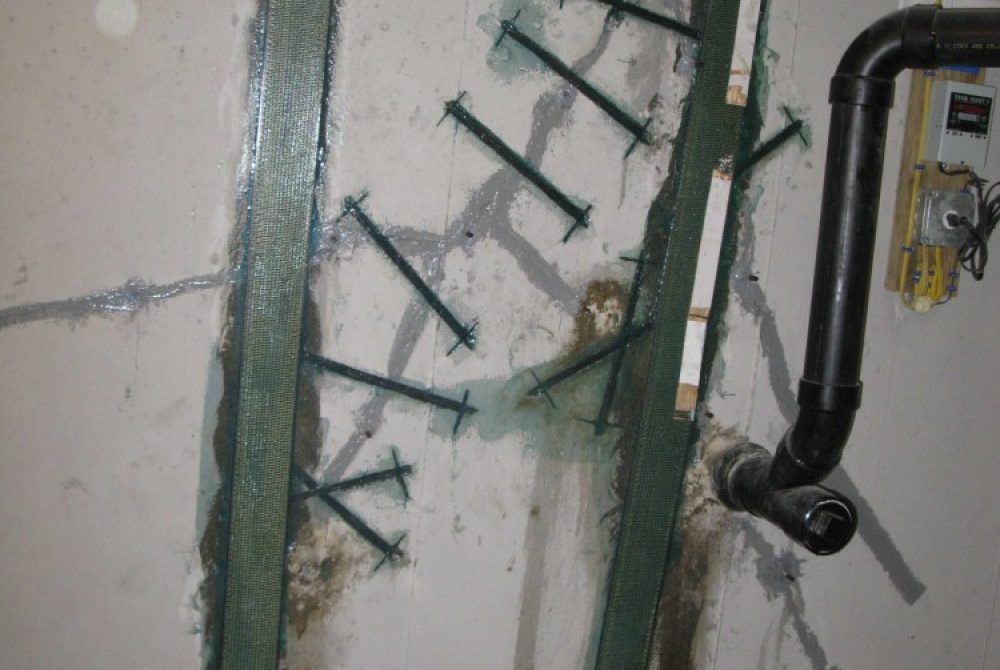Foundation Leak & Structural Repair
Structural repair of concrete foundations and retaining walls can be achieved for thousands less than replacement costs. We utilize technologies and methods that include Structural Epoxy resins, Carbon Fiber, Stainless Steel, and Kevlar. Cracked Foundations and sagging walls can be supported and strengthened. Weak and deteriorated concrete can be chipped away, strengthened, patched and then coated with an appealing finish that would hide the damage.
Foundation Repair, CT – Can Anything Be Fixed?
No matter what the damage is, there is a chance that a repair solution instead of replacement can be engineered and implemented to fix that basement leak.
Many cracks in foundation walls are subject to leaking. Heavy rains, curtain drain failure and seasonal rising water tables can create leaks that enter the basement through these cracked walls. Our Epoxy Crack Injection and Urethane Crack Injection services can fix the problem permanently. The process of low pressure injection will fill the crack completely through the entire wall thickness and stop any water penetration.
What can I do to protect my family?
A commonly overlooked danger to your family is airborne mold spores. The moisture in basement areas is usually not evident unless you look for it. Mold hides itself well behind floor joists, electric panels, hangings on foundation walls such as pegboards and central vacuums, behind walls, and under storage containers. Do yourself a favor and scour your basement landscape in search of prime mold breeding conditions. If you see darkness of the concrete floor or wall, white powdery residue called “Efflorescence”, or dark green or black material then you have a moisture problem. Also take note of the same discoloration on the underside of the floor system (wood or steel joists) and sill plates.
Moisture Testing
DiamondKote® offers expert moisture testing for $175. This test will measure the rate of Moisture Vapor Pressure (MVP) that passes through concrete. We then examine these results and prescribe an abatement solution tailored to your needs.
Another quick moisture test is the “Mylar Test”. Simply cut a 12″ square out of a 4 mil garbage bag and duct tape it to a clean area of the concrete wall or floor,1 foot from the outside wall. The best placement for this test is at the side of the building where there is a negative grade (i.e. the yard slopes toward the building). After 36-48 hours lift the mylar film and see if there is moisture on the bottom side of the plastic, or if there is a dark area on the concrete that was below the plastic.
Take photos and Contact us with the results and upload images so we can determine the basic results for you. If we find moisture is present, you might want to invest in our test for an accurate measurement. The best time to do this test is early spring and late fall which are usually the rainy seasons.
Winter time testing can yield false results because the ground is frozen and the homes heating system will introduce warm dry air into the basement area.



